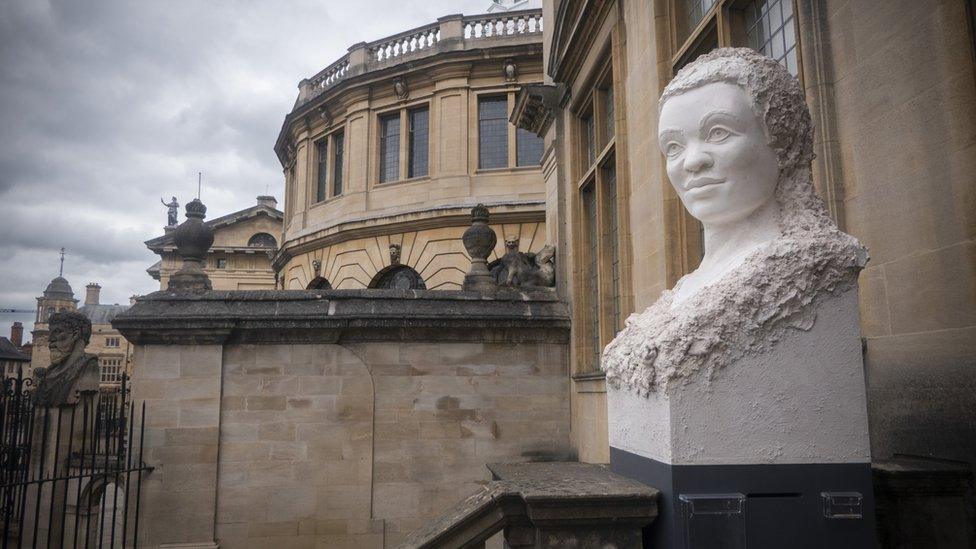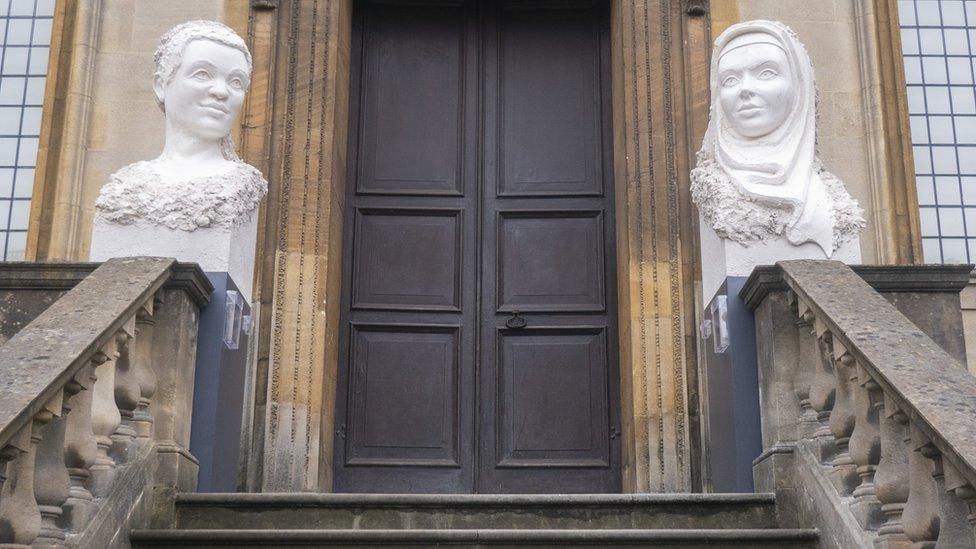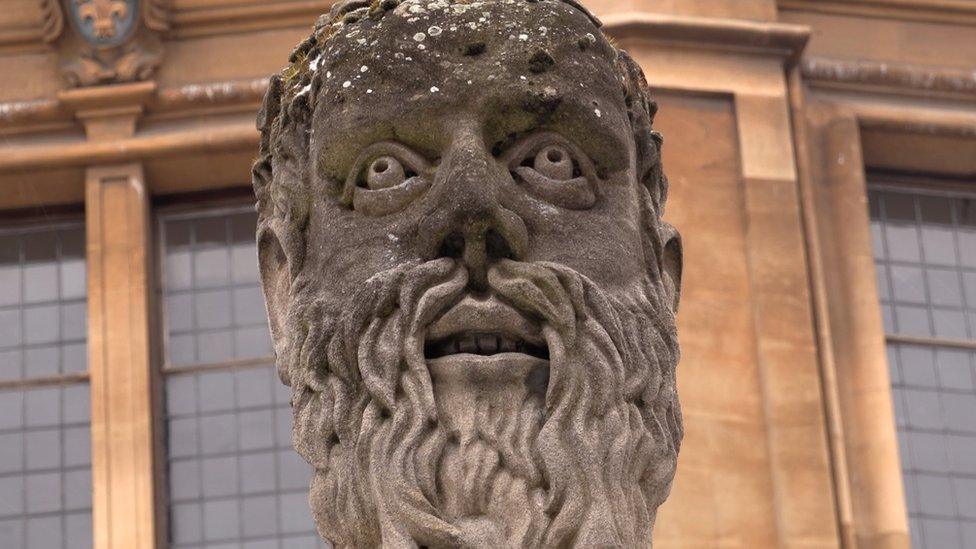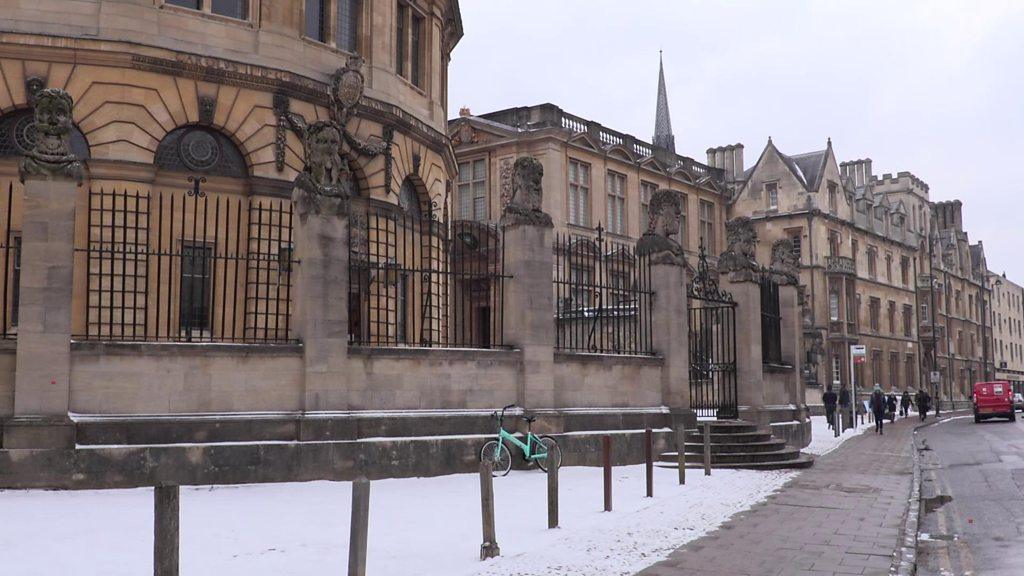New faces join Oxford's Sheldonian Theatre 'Emperor Heads'
- Published

The sculptures can be seen along Broad Street in Oxford
Two new faces have been added to a row of sculptures outside Oxford's Sheldonian Theatre.
The carved figures, known as the Emperor Heads, were first commissioned by Sir Christopher Wren in the 1660s but have since been replaced twice.
The two new heads, representing women from different ethnic backgrounds, will be temporarily mounted on plinths outside the History of Science Museum.
The aim is to encourage dialogue on how public sculpture can be diversified.
Although they are referred to as the Emperor Heads, it is thought they depict ancient philosophers or emperors and are the third set to have lined the perimeter of the buildings in Broad Street.

The museum will host a free clay modelling workshop on 22 June
There were originally 13 but four more were added outside the History of Science at a later date.
The fate of the first two sets was never recorded and their whereabouts was largely unknown until a campaign by the School of Geography and the Environment to track them down in 2017.
The majority are now on display as part of the Oxford's Stone Heads exhibition in the Weston Library until 21 July.
As well as the addition of two female heads, an interactive art installation will open later in the month that will allow visitors to "hear the voices" of the Emperor Heads.


Emperors facts
In total 17 Emperor Heads stand outside the Sheldonian Theatre and History of Science Museum - each weighs about one tonne
The original set of 13 was carved by William Byrd and commissioned by Sir Christopher Wren when the Sheldonian Theatre was built between 1664 and 1669
One theory suggests Wren got the idea from seeing similar heads outside a chateau in France
The first set was replaced in 1868 but the second generation eroded faster than the older statues and had weathered heavily by 1970
Sculptor Michael Black spent two years carving the replacements, which were put in place in 1972
Source: Wadham College and School of Geography and the Environment

- Published4 March 2018

- Published4 March 2018
